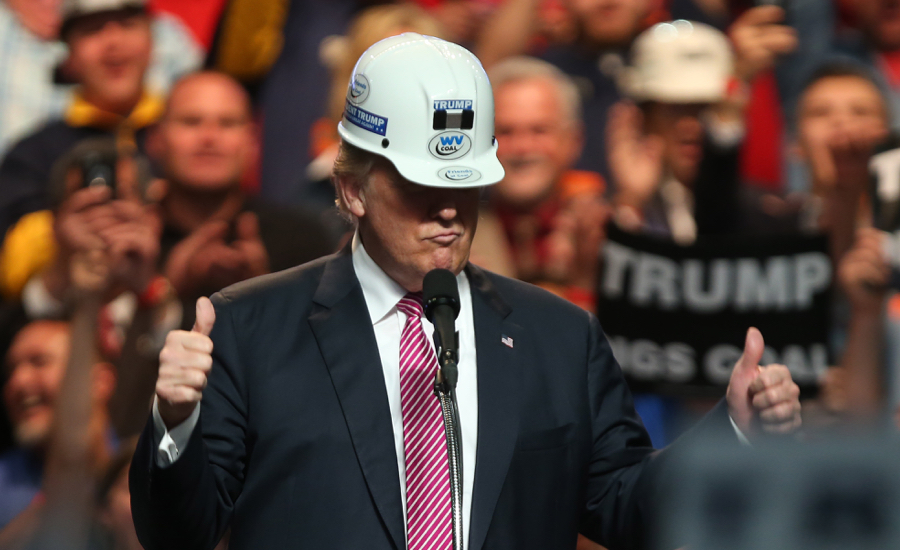Coal’s days may be over in the US

Last year, there were 38 days when US utilities got more electricity from hydroelectric, wind and solar generation than from coal, according to the Institute for Energy Economics and Financial Analysis. So far this year, according to the IEEFA and my own crunching of U.S. Energy Information Administration data, it’s already 122 — including every day in the month of April and all but three in May.
In the summer months, higher electricity demand and decreased production from wind turbines and dams give coal a seasonal boost, but expect renewables to start out-generating it again in the fall. The EIA is now projecting that renewables will produce more electricity than coal for 2020 as a whole — a milestone that as recently as last year it didn’t anticipate coming until 2031. Here’s how things looked through May, the most recent month for which full data are available.
Some other countries are of course much further along in this transition. In the U.K., coal has gone from the top electricity source as recently as six years ago to effectively irrelevant. In the European Union, renewables (including biofuels) generated more electricity than all fossil fuels in the first six months of this year.
The EIA projects that renewables will produce more electricity than coal for 2020 as a whole.
Still, in those places there has been a political consensus in favor of reducing greenhouse-gas emissions, and consistent national policies pushing toward a phaseout of coal. The U.S. has since January 2017 been led by a president who doesn’t believe the climate is warming and pledged to bring a major coal revival. Yet the decline in U.S. coal use has accelerated since Donald Trump took office. The country is projected to consume 40% less of the stuff this year than in 2016, less than it has in any year since the early 1960s, when overall U.S. electricity use was about one-fifth of what it is now.
This continuing decline of coal has been cited as “emblematic of the president’s executive fecklessness,” but I’m not sure that’s quite right. Although on many topics the Trump administration has offered little but blustery talk, its efforts to revive coal have been substantial. Trump’s Environmental Protection Agency rolled back a major regulation crafted under President Barack Obama that targeted carbon-dioxide emissions from burning coal and weakened limits on mercury emissions. After Trump’s first energy secretary, Rick Perry, tried and failed to persuade the Federal Energy Commission to force electrical utilities to subsidize coal-burning power plants, FERC passed an order in December meant to cancel out some states’ subsidies for renewables.
The FERC order and the mercury rule tweak are both quite recent, so it’s a little early to judge their impact, but it would take a great leap of faith to imagine them spurring a coal comeback. Yes, a pandemic-induced recession was responsible for some of the demand destruction this year, and coal use may bounce back a bit in 2021 as the economy does.
There will also be some continued demand for U.S. coal from steelmakers and from foreign countries. But by all appearances the coal-fired power plants that burn the vast majority of U.S. coal are just going to keep on closing, and as they do the economics of mining coal in the U.S. will keep getting less and less attractive. The retrenchments and bankruptcies that have become standard for the industry over the past decade may even give way to a death spiral. Writes Seth Feaster, an analyst at the aforementioned IEEFA, a pro-renewables think tank:
The growing probability is that the collapse of U.S. coal mining will be disorderly, resulting in bankruptcies that end in liquidation, abrupt mine closures, the abandonment of cleanup obligations, and possibly the financial collapse of some bonding companies that are supposed to be the backstop for those liabilities.
As is apparent from the first chart above, coal has been displaced in U.S. electricity generation mainly by natural gas. The rise of hydraulic fracturing and horizontal drilling has enabled an 80% increase in U.S. gas production since 2006, and about a 50% decline in price. With coal prices up modestly over that period, this has transformed the economics of power production. In most places in the U.S., most of the time, it now costs more to produce an additional kilowatt hour of electricity with coal than with any other major energy source.
President Trump has demonstrated that even a fervently pro-coal, anti-renewables administration can’t halt the decline of the former or the rise of the latter.
Natural-gas power plants are also better suited than coal-fired ones to vary their output over the course of the day, making them more compatible with the wind and solar operations that began to play a significant role in U.S. power production over the past decade, thanks in part to federal and state subsidies but also to near-zero marginal costs and declining upfront costs. The Obama-era environmental rules mentioned above also favored natural gas, which burns cleaner and produces less carbon dioxide than coal does, as well as emissions-free renewables and nuclear power. And yes, private efforts to encourage coal-plant closures, some of them backed by Michael R. Bloomberg, founder and majority owner of Bloomberg LP, the parent company of Bloomberg News, have surely played a role, too.
Trump has taken aim at the subsidies and the environmental rules. He has also spent a lot of time talking about how much he hates wind power. But new wind and solar installations are now usually cheaper sources of electricity than coal and gas plants even without subsidies, and no one in the electrical utility industry believes that the Trump administration’s stance on carbon-dioxide emissions represents the most likely course of U.S. policy in the long run. The amount of electricity generated from wind is up 37% in the U.S. since Trump took office, with wind passing hydroelectric in the middle of last year to become the nation’s No. 1 renewable source of electricity. Solar generation is up 109%, albeit from a lower base. Despite the pandemic, the EIA still expects big increases in generating capacity for both to be put in place this year.
President Trump has demonstrated, then, that even a fervently pro-coal, anti-renewables administration can’t halt the decline of the former or the rise of the latter. That’s good to know, I guess. But wow, what a waste of time and effort.
(By Justin Fox)
More News
Mining billionaire Agarwal moves closer to breaking up his empire
April 22, 2025 | 09:06 am
Copper hits two-week high as dollar weakens
A Bloomberg gauge of the dollar fell to a 15-month low on Monday.
April 22, 2025 | 08:06 am
{{ commodity.name }}
{{ post.title }}
{{ post.date }}



Comments